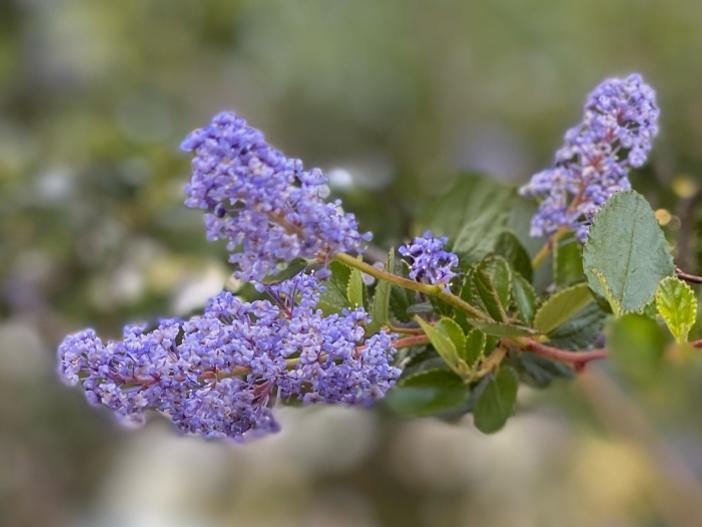Woolyleaf Ceanothus
(Ceanothus tomentosus)
Woolyleaf Ceanothus (Ceanothus tomentosus)
/
/

Photo by Easyscape
CC BY-SA 4.0
Image By:
Photo by Easyscape
Recorded By:
Copyright:
CC BY-SA 4.0
Copyright Notice:
http://creativecommons.org/licenses/by-sa/4.0/ | CC BY-SA 4.0





























































Estimated Native Range
Summary
Ceanothus tomentosus, commonly known as Woolyleaf Ceanothus, is an evergreen shrub native to the chaparral and coastal sage scrub of California, particularly thriving on open sites such as slopes and ridges. It can also be found in the understory of coniferous forests, where it contributes to the biodiversity of these ecosystems. This species typically grows to a height of up to 3 meters and is characterized by its erect, occasionally tree-like form. The shrub is notable for its pale-blue to deep blue flowers that bloom profusely in the spring and may continue into winter, attracting pollinators such as bees and butterflies.
Woolyleaf Ceanothus is valued for its drought tolerance and low maintenance requirements, making it an excellent choice for water-wise gardens and native plant landscapes. Its dense foliage and rapid growth rate also make it suitable for use as a screen or hedge. The reddish or brown woody parts, especially when new, add to its ornamental appeal, as do the flexible, non-thorn-like twigs, which contrast with species like Ceanothus leucodermis that have rigid, thorn-like twigs. The leaves are dark green, elliptic to oval, with short hairs on the top and a woolly texture underneath. The sticky, lobed fruit capsules are a few millimeters long and appear after flowering. Woolyleaf Ceanothus prefers full sun but can tolerate partial shade, requires little water once established, and thrives in well-drained soils. While generally disease-resistant, it can be susceptible to root rot if overwatered or planted in poorly drained soils.CC BY-SA 4.0
Woolyleaf Ceanothus is valued for its drought tolerance and low maintenance requirements, making it an excellent choice for water-wise gardens and native plant landscapes. Its dense foliage and rapid growth rate also make it suitable for use as a screen or hedge. The reddish or brown woody parts, especially when new, add to its ornamental appeal, as do the flexible, non-thorn-like twigs, which contrast with species like Ceanothus leucodermis that have rigid, thorn-like twigs. The leaves are dark green, elliptic to oval, with short hairs on the top and a woolly texture underneath. The sticky, lobed fruit capsules are a few millimeters long and appear after flowering. Woolyleaf Ceanothus prefers full sun but can tolerate partial shade, requires little water once established, and thrives in well-drained soils. While generally disease-resistant, it can be susceptible to root rot if overwatered or planted in poorly drained soils.CC BY-SA 4.0
Plant Description
- Plant Type: Shrub
- Height: 4.5-6 feet
- Width: 5-6 feet
- Growth Rate: Moderate
- Flower Color: Blue, Purple
- Flowering Season: Spring
- Leaf Retention: Evergreen
Growth Requirements
- Sun: Full Sun, Part Shade
- Water: Low
- Drainage: Fast
Common Uses
Bee Garden, Bird Garden, Butterfly Garden, Drought Tolerant, Fragrant, Hedges, Hummingbird Garden, Low Maintenance, Showy Flowers, Street Planting
Natural Habitat
Chaparral, coastal sage scrub, and coniferous forest understories
Other Names
Common Names:
Scientific Names: , Ceanothus tomentosus, Ceanothus tomentosus var. olivaceus, Ceanothus tomentosus subsp. olivaceus, Ceanothus tomentosus var. tomentosus, Ceanothus oliganthus var. tomentosus,
GBIF Accepted Name: Ceanothus tomentosus Parry